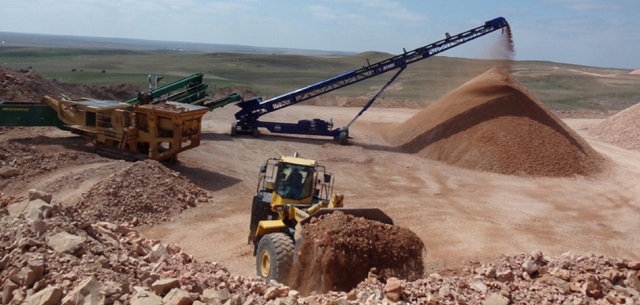
Carbon emissions, land loss
Unsustainable or illegal sand extraction from marine, coastal and freshwater ecosystems has led to serious sustainability challenges, including carbon emissions and land loss. These environmental impacts will likely be further compounded: data on sand extraction are incomplete, with global sand imports exceeding global exports.
The case of sand exports from Cambodia illustrates this. Singapore imported 80.2 million tonnes of sand from Cambodia between 2007 and 2016, representing a third of the city-state’s sand imports. Yet, most of this trade is absent in Cambodia’s official trade logs — Cambodia registered only 2.77 million tonnes of sand exports to Singapore, disguising how important this commodity is to the country’s development.
Infrastructure demands for housing and development fuels the concrete sector, which now contributes eight per cent of global carbon dioxide emissions. This is a serious issue from a carbon emissions perspective. That means sand, by way of concrete, is tied to our climate futures — and vice versa, as the recent interest in mining the sand emerging from Greenland’s melting ice sheet demonstrates.
Scientists have also confirmed river bank instability from sand mining in the Mekong, Yangtze and other large rivers. Sand dredging impacts river flow, erosion levels and aquatic habitats.
In Myanmar, river-bed farmers are losing their land as sand mining intensifies. Across the Mekong Delta, people are struggling to find fish, which are affected by the noise of sand dredging, as homes and roads further crumble into rivers.
Mobilising a sand agenda
An important starting point for mobilising a sand agenda is the 2019 UNEP sand governance report, focusing on accountability and transparency in sand value chains. Global sand governance is critical.
Changing how we build our cities is another part of how we face the sand and climate crises. We need to ask ourselves why we have been so seduced by concrete. If we do not change our habits, and encourage the development of “green concrete” and alternative building materials or innovations such as using bacterial species in bio-concrete, the world built from sand may be pulled down by its own weight.
To further mobilise a sand agenda, researchers and campaigners could focus on narratives that draw on the climate crisis or other ecological dimensions, such as directing attention to how sand dredging is linked to landslides and poorer water quality, or how sand infill leads to the loss of wetland habitat.
Others could unpack labour regimes, advocate for better working conditions, or explore the involvement of political groups in financing sand extraction. We need to delve deeper into how the sand mining sector relies on cheap labour, fast-moving money, some of it illicit, and criminal activities.
This sand agenda, through the consideration of working conditions and ecological dimensions, enables us to imagine a global future that is greener and more just.
****
Source: the conversation
CLICK TO READ ONLINE MAGAZINE HERE
 The Independent Uganda: You get the Truth we Pay the Price
The Independent Uganda: You get the Truth we Pay the Price



